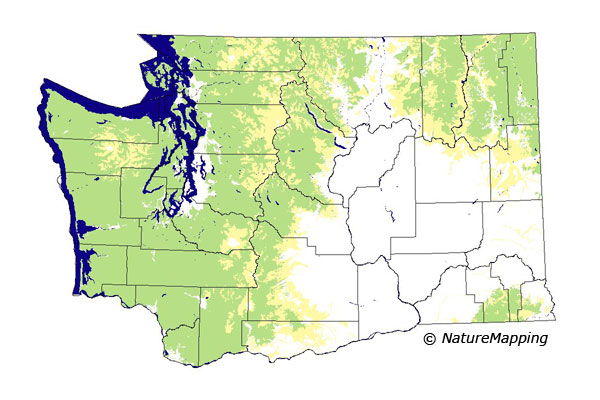 |
Metadata (Data about data or how the map was made)
Legend:
 = Core Habitat
= Core Habitat
 = Marginal Habitat
= Marginal Habitat
Predicted Distribution
Amphibians do not migrate as some birds and mammals, so the colored areas depict
the predicted range for the Western Toad year-round. The habitats were identified
using 1991 satellite imagery, other datasets and experts throughout the state,
as part of the Washington Gap Analysis Project.
Other
maps & Information:
|
Distribution and Habitat Requirements
The Western Toad lives primarily on land, and is found from sea level to high mountainous areas.
Special requirements are ponds, lakes, and slow moving streams and rivers for breeding. This toad may be found in hardwood forests.
In addition to the typical lake or pond breeding sites, this species sometimes breeds in the backwaters of larger rivers.
They inhabit many upland environments including riparian areas dominated by hardwood trees. They are also known on many islands in the northern Puget Sound.
Models
All ecoregions throughout Washington were selected.
In western Washington, all zones up to and including Silver Fir were core zones. Mountain Hemlock and Alpine/Parkland zones were marginal.
In eastern Washington, the steppe zones, Ponderosa Pine, Mountain Hemlock and Alpine/Parkland were marginal. The rest of the forested zones were core.
Good habitats were open water, rivers and riparian areas. All non-forested and forested habitats were considered suitable if appropriate microhabitats
existed.
Webpage designed by Dave Lester.